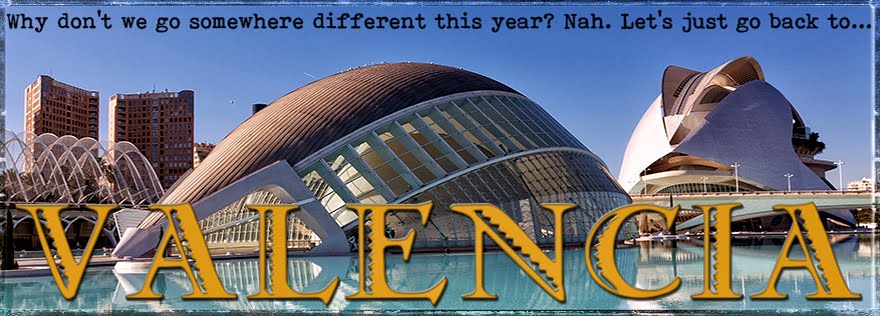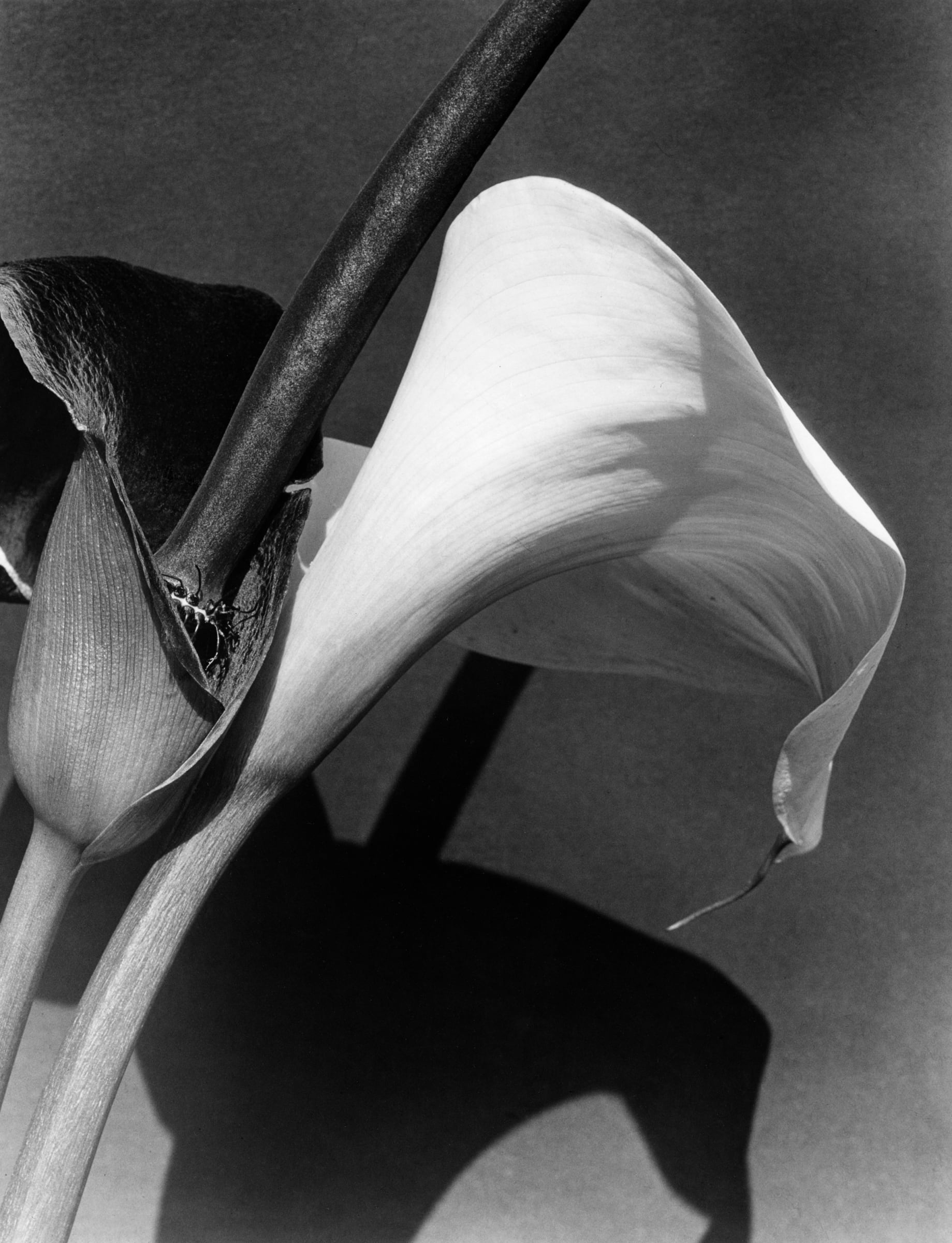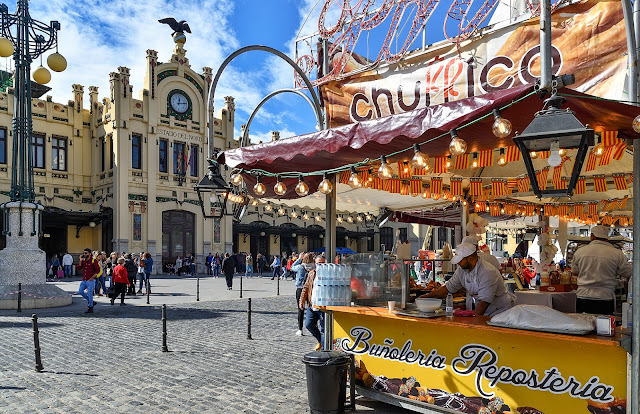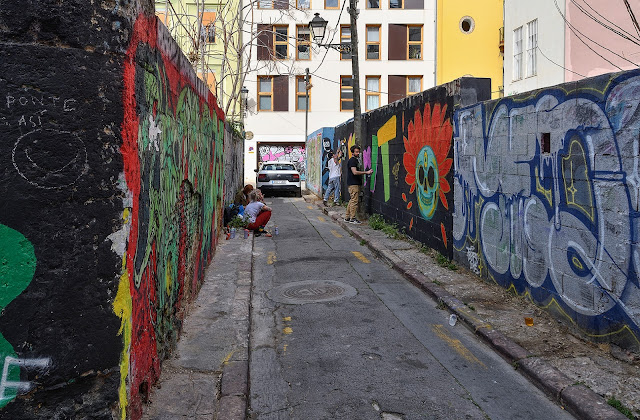19 March 2020 - We're home, in self-isolation. As a friend said to me recently - by email, of course - "What times we live in!"
Our stay in Valencia ended on a somewhat fraught note. When we arrived at the airport last Saturday to catch a Ryanair flight back to England - with Caitlin, Bob and Louis in tow - we learned from online sources that the Spanish government was about to order an Italian-style lock-down. At that point, we didn't know exactly what it would mean or when it would come into effect, so weren't too worried. We were taken a bit by surprise, though.
We'd been monitoring the situation in Spain and Valencia. It was clear it was getting worse. Madrid and Barcelona, not surprisingly, were bearing the brunt, but there was also a smaller number of confirmed cases, and one death, in Valencia province, which includes the city. But Spain was nothing like Italy. We thought.
 |
| Amstel fallas at corner of Calles Sueca and Literati Azorin |
 |
| Mahou fallas at corner of Calle Cuba and Literati Azorin |
Some measures had already been taken. Fallas, the big end-of-winter festival was cancelled about three days before we left, although we didn't realize right away. The neighbourhood Fallas organizations and big corporate sponsors had begun erecting their sculptural tableaux in squares and at street corners. It's always a fascinating process to watch. But on the second-to-last morning, I noticed at one site the tableau had been partly dismantled. I thought it was just to make repairs, but now think they were starting to tear down. We also noticed that the mascletás, the "noise fireworks" they let off at city hall square every day at 2 pm during the festival, had stopped.
 |
| Mahou fallas: detail |
 |
| Mahou fallas |
Fallas brings an estimated €500 million economic benefit to the city. That's about $750 million Canadian! A lot of it, probably most, would be lost. There was still a week to go when they cancelled. That last week is the most important, with the most activities and events, and the period for which most visitors come to the city.
 |
| Mahou fallas |
At the airport that Saturday, we were able to check in, although with some delay. They loaded the plane late but everything still seemed fine. Then we sat on the runway. The pilot told us that because we were late pulling back from the gate, we'd lost our take-off slot. We were still fairly oblivious. In the end, it was about 90 minutes late taking off - but did take off.
It was only when we got to England that we heard the Spanish government had pulled the trigger on the lock-down shortly after we took off. That said, it's not clear we would have been stranded even if we'd been leaving later. A friend of a friend of Karen's got out of Malaga in the south of Spain as late as this Friday.
The photographs above were taken not far from our flat on the day Caitlin, Bob and Louis were arriving. It's a park in a triangular block - two streets at right angles, one running diagonally between them - bounded on all sides by mid-rise apartment blocks. I photographed the street art a few years ago, and went back this year to see what, if anything, had changed. It struck me that it was a quintessentially Valencian - or maybe just big-city Spanish - scene. The grottiness of the space, which is used as a dog park and is littered with dog shit, juxtaposed with the beautiful redbud trees in full bloom and the bright wall murals. You can only get into this space through a gated laneway off one of the streets, so it offers a quiet, unsupervised place for street artists to practice their craft.
 |
| My beautiful daughter, Caitlin, on the terrace of our flat |
 |
| My handsome son-in-law, Bob, who claims I never photograph him |
 |
| Mummy and Louis at a restaurant |
Until the very end, it was a really nice visit with Caitlin and Bob and Louis. We didn't do a lot. They were more interested in chilling out - and poor Bob had work to take care of that kept him at his computer more than we had realized would be the case. We got to the beach one day for a walk along the promenade and tapas and drinks at an outdoor bar. There were a couple of lunches out and other walks around the centre and over into Ruzafa to look at the "failures" and the lights. And one run for Bob and I in the Túria (dry riverbed) park.
 |
| Reading on the terrace - Louis's favourite activity |
The child is book obsessed. You read one to him, and he pays rapt attention. Then after a little pause, he says in a plaintive voice, "Again?" And you have to read it again - or sometimes twice or three times more. Caitlin accidentally left some of the books she'd brought for him on the plane from England. So on their first day, we walked across town to a very good multi-lingual bookstore where we were able to buy him some new books, all of which, including the ones shown in these pictures, were hugely successful.
He likes other children and he met local kids a couple of times. Once at the beach and another time at the park, he tried to join family soccer games. On both occasions, the children were very indulgent - or possibly just bewildered - and let him have a turn. No need for language.
The day before we flew out was my 70th birthday, the ostensible reason for Caitlin and family coming when they did. Wouldn't you know it, I wasn't feeling well: tummy troubles, probably something I ate. We had made a reservation at the steak place we'd gone to earlier with Shelley. It was as good as before, but I didn't eat a lot. The kids took the left-overs and Caitlin ate some on the plane the next day.
 |
| San Miguel (beer company) fallas, spotted on walk home from birthday dinner |
Then we had four days in Maldon with Caitlin, Bob and baby. Bob by the time we got back was having tummy troubles of his own and was mostly off work the first couple of days. His employer had instituted a work-at-home regime in response to COVID-19, anyway. We did get some walks in along the canal outside their door, down to Heybridge Basin and over to the Tesco. It didn't rain a lot, but the sun didn't shine a lot either. We had a couple of visits to playgrounds for Louis, which are always fun (if you're a grandparent, probably not otherwise.)
Leaving them was hard. Panic over the pandemic was ramping up in England. They were worried about us. We were - are - worried about them, and about whether our flight would leave as scheduled. The Canadian government was urging travellers to come home "as soon as possible." Did they know something we didn't? Air Transat wasn't saying anything about imminent cancellations, but we couldn't be sure.
We have flown into and out of Gatwick for years. I've never seen it so eerily uncrowded. Checking in and going through security were a breeze. The big central Departures area is usually a zoo. Sometimes it's hard to find a seat it's so busy. Not this day. We had our choice of seats.
By now we were starting to be a little paranoid about the pandemic. We moved once when a couple of people wearing surgical masks decided to sit right behind us - inches away, not even close to the recommended six feet. At another point, a guy settled across from us - again not anywhere nearly six feet away - and promptly gave a great sneeze. I had bought disposable latex gloves before we left Maldon, which we wore at the airport, and we had antiseptic wipes which we used as well.
But our paranoia was nothing compared to some passengers. Lots, mostly Asians, it seemed, were wearing masks. Karen saw a couple wearing actual hazmat suits. There was one young woman sitting not far from us with an absurd get-up that had her masked and covered from head to toe in multiple layers. One layer was a plastic raincoat. We watched as she sprayed herself all over with some kind of disinfectant.
Quite a few flights were cancelled - a lot of them EasyJet. The EasyJet information desk was besieged by irate passengers. We sat and read our books and newspapers and texted with friends and family. I picked up a couple of liters of my favourite single malt, Glenmorangie, at Duty Free. It was on sale for £36 the liter. That's less than I'd pay at home for a 750 ml bottle.
The departure gate for our flight was announced exactly when the board said it would be, which is a good sign the flight is on time. And it was.
The flight was uneventful, but disappointingly spartan. We had splurged and paid for Club Class. Air Transat, perfectly reasonably, had decided as part of its response to COVID-19 - to protect "staff and passengers" - to cut virtually all in-flight services. Instead of a welcome glass of wine, we got mediocre bagged lunches with stale food and bottled water left on our seats. There was no hot meal, no booze.
The two attendants in Club Class spent most of the time sitting in their jump seats in the galley, masked, reading, with the curtain between galley and cabin closed. They asked us not to come in unless we were on our way to the washroom.
Fair enough. It must have been nerve-wracking for them to be on those flights.
At one point, I asked them if they knew what we could expect at Pearson. The government had restricted all incoming international flights to four airports, which meant Toronto might have been receiving extra flights that would normally have landed elsewhere. The guy said he didn't really know, but had heard from other crews that they were only letting 200 people at a time into the Customs hall, with resulting waits of up to two hours.
As it turned out, the number of incoming flights had been so curtailed that there were no such delays. In fact, it was the fastest we'd ever got through Customs and collected our bags. We touched down on time at 3:30, had our rental car by 4:30 and were home before 6:30. There was no rush-hour. Astonishing.
Now we have two weeks of self-isolation. What times we live in!






































































